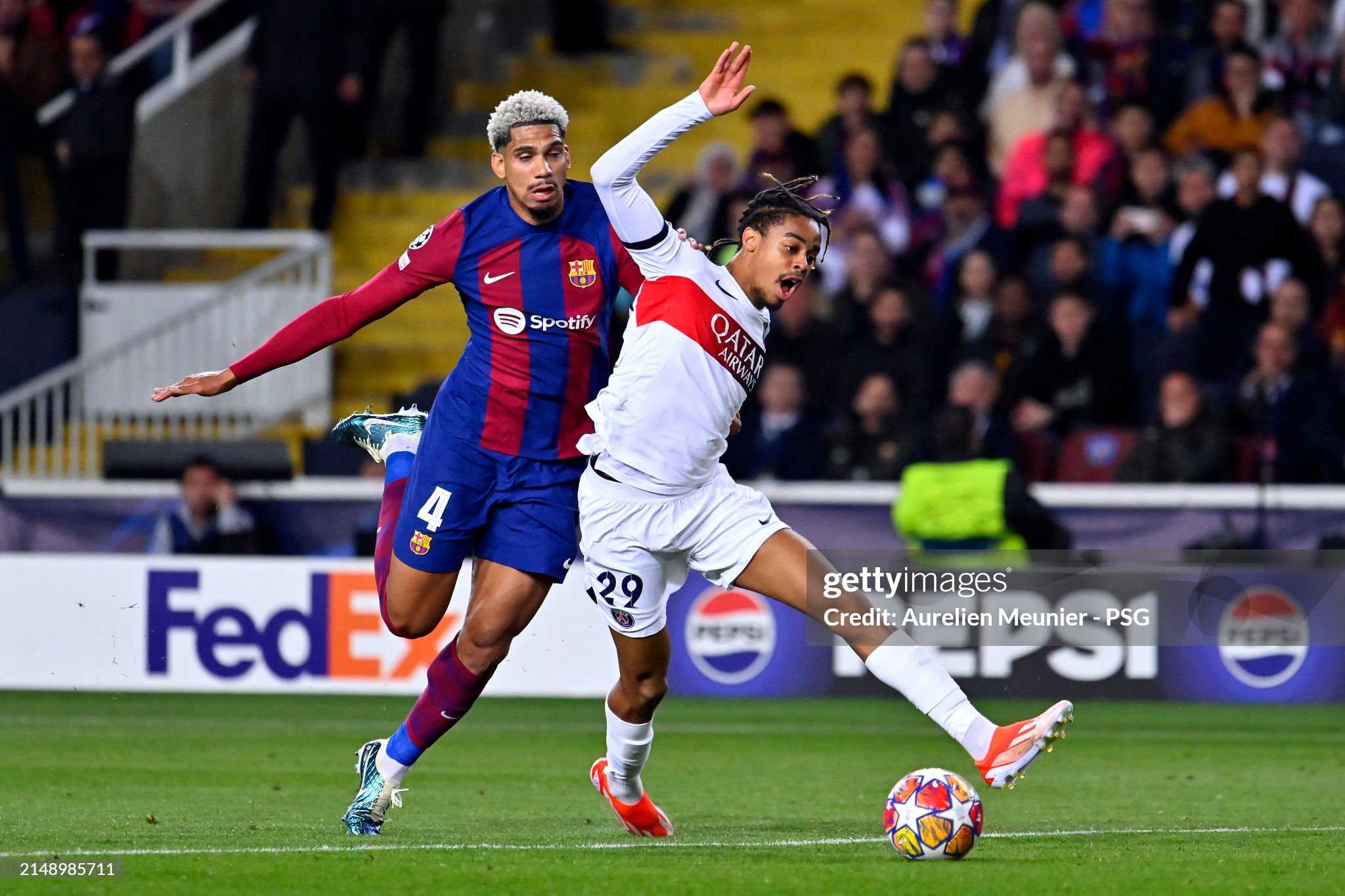Exploring the ‘PSG Barcelona tactical evolution’ reveals strategic shifts in their recent Champions League matches. This analysis examines how Paris Saint-Germain and Barcelona have adapted their tactics to stay competitive in European football.
PSG Barcelona Tactical Evolution: Strategic Mastery Unraveled
The recent Champions League quarter-final showcased PSG Barcelona’s tactical evolution from star-driven play to strategic teamwork. Under Luis Enrique, PSG has moved from star-driven plays to a systematic, cohesive approach. This shift became clear when PSG’s dynamic trio—Mbappe, Barcola, and Dembele—challenged traditional styles.
Enrique placed Dembele on the right flank instead of the center, letting Mbappe take the central striker role. This tactic let PSG exploit gaps in Barcelona’s defense, using Mbappe’s speed and Dembele’s skill to dismantle their structure.
The PSG Barcelona Tactical Shift: Analyzing Barcelona’s Conundrum
On the other side, Barcelona, under Xavi Hernandez, continued to embrace a philosophy centered around possession and meticulous structure. However, this approach showed its limits against PSG’s tactical flexibility. Barcelona’s use of a 4-4-2 formation in the quarter-final’s first leg offered stability but also led to predictable patterns that PSG could foresee and disrupt.
The turning point in the tactical battle came with the dismissal of Ronald Araujo. His red card left Barcelona not only a man short but also exposed to PSG’s strategic adjustments. The French club capitalized on this advantage, manipulating their formations and tempo to widen the tactical gaps, showcasing the effectiveness of adaptive strategy in high-stakes matches.
Strategic Implications of the PSG-Barcelona Clash in the Champions League
The aftermath of PSG’s victory extends beyond a simple advancement in the Champions League. For Barcelona, this defeat serves as a stark reminder of the competitive demands of European football and the necessity for tactical elasticity. Xavi’s rigid tactical principles, while often effective, must evolve to incorporate more flexibility and unpredictability to cope with the diverse strategies employed by European elites.
The win reinforces PSG’s Champions League dominance and highlights their tactical adaptability. Enrique’s game plan leverages player strengths and team cohesion, potentially setting a new European tactical standard.
Future Prospects in Continental Competitions
Strategic lessons from this match will shape both teams’ tactics in future European campaigns. PSG will refine their tactics, likely influencing other Champions League teams’ flexible strategies.
Barcelona’s path forward is less straightforward. The challenge for Xavi and his coaching staff is to integrate the hard lessons from this defeat into their tactical repertoire. With a squad rich in talent and potential, there is significant scope for developing a more adaptable approach that could see them return to the forefront of European football.
Conclusion
The Champions League often acts as a crucible for tactical innovation and adaptation. PSG’s triumph over Barcelona in this quarter-final not only highlighted their tactical acumen but also set the stage for future tactical evolutions in the tournament. As teams across Europe take note, the strategies employed by PSG could herald a new era of tactical thinking. For Barcelona, the journey ahead will be one of reflection and perhaps transformation, as they seek to blend their storied tactical heritage with the demands of modern football to regain their elite status.
Also Read: The Dawn of a New Era: Barcelona’s Youth Revolution | Instagram
